Serving 688 students in grades Prekindergarten-8, Maree Garnett Farring Elementary Middle School ranks in the bottom 50% of all schools in Maryland for overall test scores (math proficiency is bottom 50%, and reading proficiency is bottom 50%).
The percentage of students achieving proficiency in math is 5% (which is lower than the Maryland state average of 25%). The percentage of students achieving proficiency in reading/language arts is 21% (which is lower than the Maryland state average of 45%).
The student:teacher ratio of 16:1 is higher than the Maryland state level of 14:1.
Minority enrollment is 85% of the student body (majority Hispanic), which is higher than the Maryland state average of 68% (majority Black and Hispanic).
Quick Stats (2025)
- Grades: Prekindergarten-8
- Enrollment: 688 students
- Student:Teacher Ratio: 16:1
- Minority Enrollment: 85%
- Overall Testing Rank: Bottom 50% in MD
- Math Proficiency: 5% (Btm 50%)
- Reading Proficiency: 21% (Btm 50%)
- Science Proficiency: 6-9% (Btm 50%)
- Source: National Center for Education Statistics (NCES), MD Dept. of Education
School Overview
Maree Garnett Farring Elementary Middle School's student population of 688 students has declined by 7% over five school years.
The teacher population of 44 teachers has stayed relatively flat over five school years.
Grades Offered
Grades Prekindergarten-8
(offers virtual instruction)
(offers virtual instruction)
Total Students
688 students
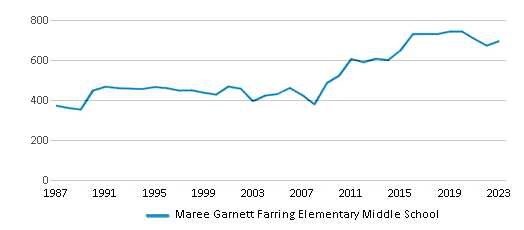
Gender %
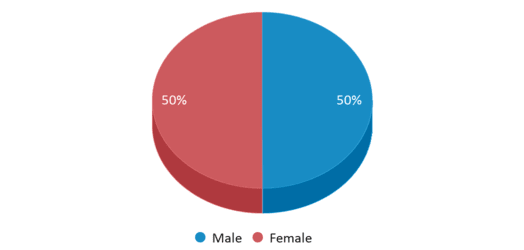
Total Classroom Teachers
44 teachers
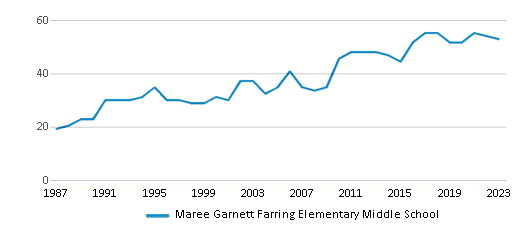
Students by Grade
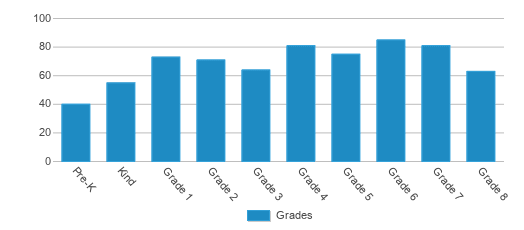
School Rankings
Maree Garnett Farring Elementary Middle School ranks within the bottom 50% of all 1,347 schools in Maryland (based off of combined math and reading proficiency testing data).
The diversity score of Maree Garnett Farring Elementary Middle School is 0.58, which is less than the diversity score at state average of 0.74. The school's diversity has stayed relatively flat over five school years.
Overall Testing Rank
#1190 out of 1347 schools
(Bottom 50%)
(Bottom 50%)
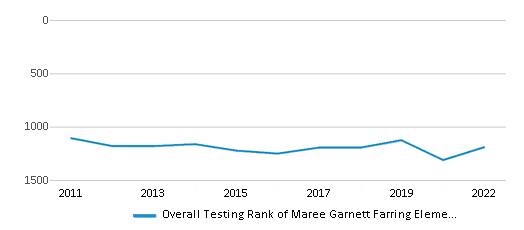
Math Test Scores (% Proficient)
5%
25%
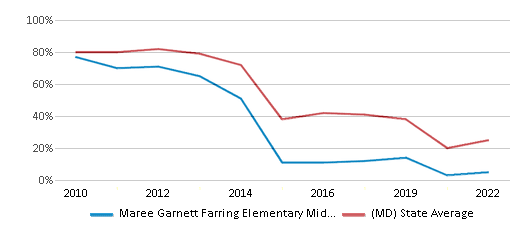
Reading/Language Arts Test Scores (% Proficient)
21%
45%
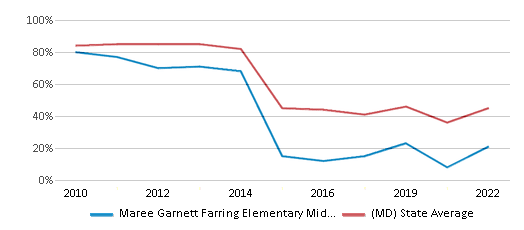
Science Test Scores (% Proficient)
6-9%
36%
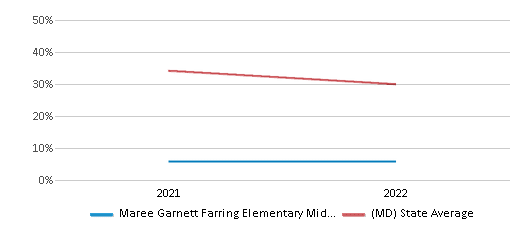
Student : Teacher Ratio
16:1
14:1

American Indian
1%
n/a
Asian
1%
7%
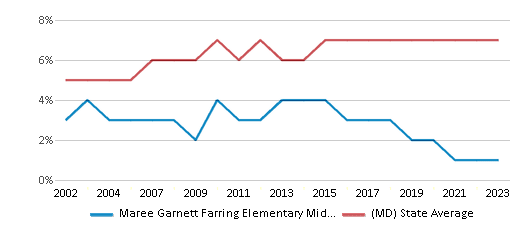
Hispanic
60%
23%
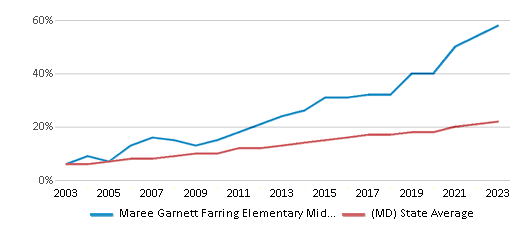
Black
20%
33%

White
15%
32%
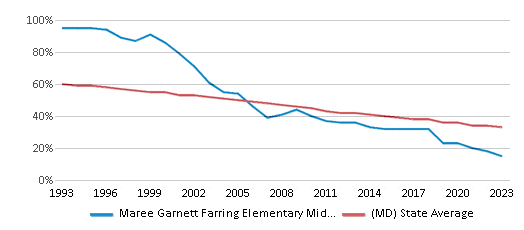
Hawaiian
n/a
n/a
Two or more races
3%
5%
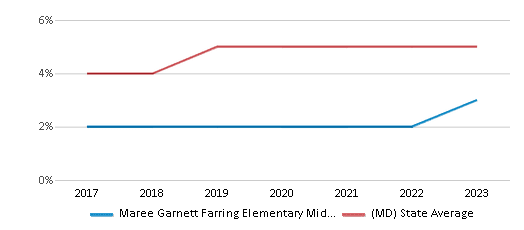
All Ethnic Groups
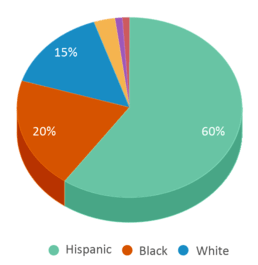
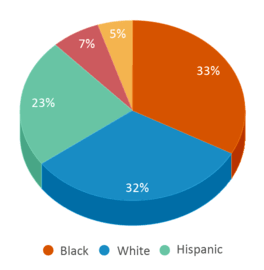

Participates in the National School Lunch Program (NSLP)
Yes
Eligible for Free Lunch
66%
44%
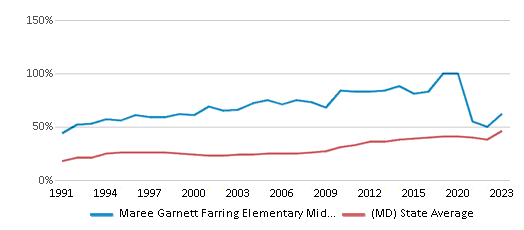
Eligible for Reduced Lunch (14-15)
11%
6%
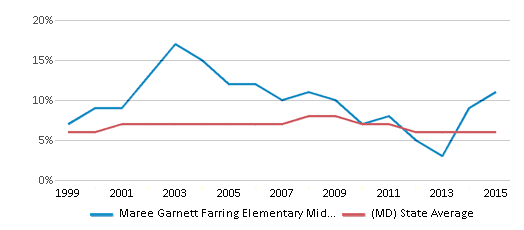
School Statewide Testing
School District Name
Source: National Center for Education Statistics (NCES), MD Dept. of Education
Profile last updated: 02/09/2025
Frequently Asked Questions
What is Maree Garnett Farring Elementary Middle School's ranking?
Maree Garnett Farring Elementary Middle School is ranked #1190 out of 1,347 schools, which ranks it among the bottom 50% of public schools in Maryland.
What percent of students have achieved state testing proficiency in math and reading?
5% of students have achieved math proficiency (compared to the 25% MD state average), while 21% of students have achieved reading proficiency (compared to the 45% MD state average).
How many students attend Maree Garnett Farring Elementary Middle School?
688 students attend Maree Garnett Farring Elementary Middle School.
What is the racial composition of the student body?
60% of Maree Garnett Farring Elementary Middle School students are Hispanic, 20% of students are Black, 15% of students are White, 3% of students are Two or more races, 1% of students are American Indian, and 1% of students are Asian.
What is the student:teacher ratio of Maree Garnett Farring Elementary Middle School?
Maree Garnett Farring Elementary Middle School has a student ration of 16:1, which is higher than the Maryland state average of 14:1.
What grades does Maree Garnett Farring Elementary Middle School offer ?
Maree Garnett Farring Elementary Middle School offers enrollment in grades Prekindergarten-8 (offers virtual instruction).
What school district is Maree Garnett Farring Elementary Middle School part of?
Maree Garnett Farring Elementary Middle School is part of Baltimore City School District.
School Reviews
2 6/21/2011
I am a parent of a child who attended this piece of crap school since 2006. I am not satisfied the way they deal with kids who have behavior/ emotional problems. I don't believe they have training in those iareas. When you speak to some of staff members they look at you like you have a 3rd eye. Office members ignore you half time and shouldn't work in public if they aren't polite. I am looking forward for my child to attend another school. I could never stand to look at that poorly looking playground I've seen better ones at McDonald's ..really.It is always trashy not even trash can in sight. The don't have music n gym is sad they make kids line up n repeat rules some kids are picked out to play and some aren't. I feel they should run,jump play freely since they may have hyperactive issues. Parents don't send you're kids here you will regret it.
Review Maree Garnett Farring Elementary Middle School. Reviews should be a few sentences in length. Please include any comments on:
- Quality of academic programs, teachers, and facilities
- Availability of music, art, sports and other extracurricular activities
Recent Articles

What Is A Charter School?
Explore the world of charter schools in this comprehensive guide. Learn about their history, how they operate, and the pros and cons of this educational innovation. Discover key facts about charter schools, including admission policies, demographics, and funding, as well as what to look for when considering a charter school for your child.

10 Reasons Why High School Sports Benefit Students
Discover the 10 compelling reasons why high school sports are beneficial for students. This comprehensive article explores how athletics enhance academic performance, foster personal growth, and develop crucial life skills. From improved fitness and time management to leadership development and community representation, learn why participating in high school sports can be a game-changer for students' overall success and well-being.

February 05, 2025
Understanding the U.S. Department of Education: Structure, Impact, and EvolutionWe explore how the Department of Education shapes American education, from its cabinet-level leadership to its impact on millions of students, written for general audiences seeking clarity on this vital institution.





